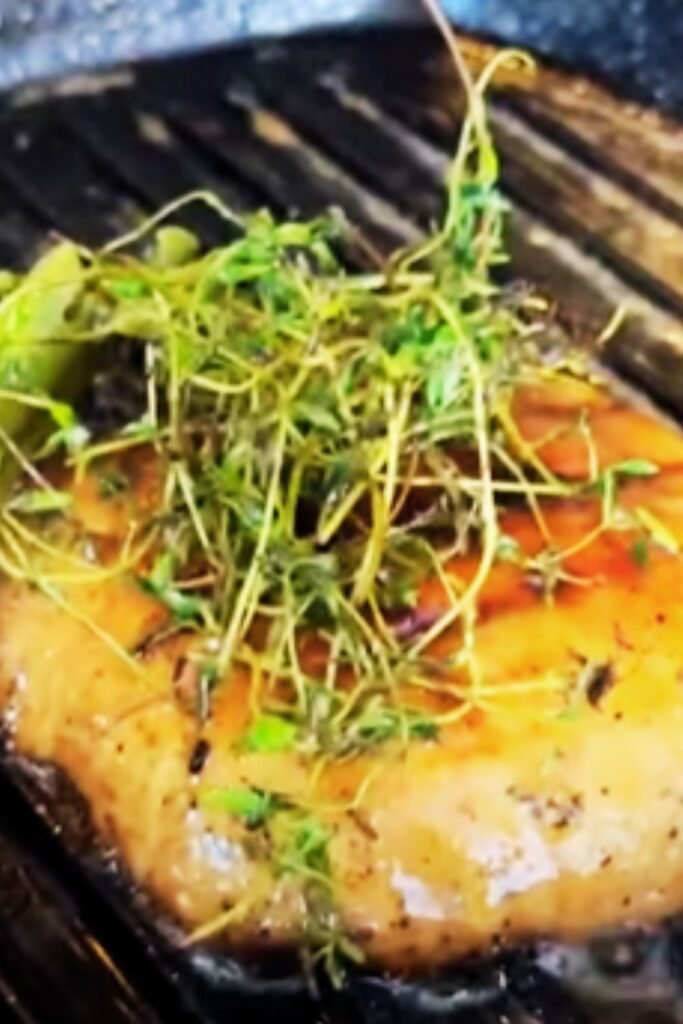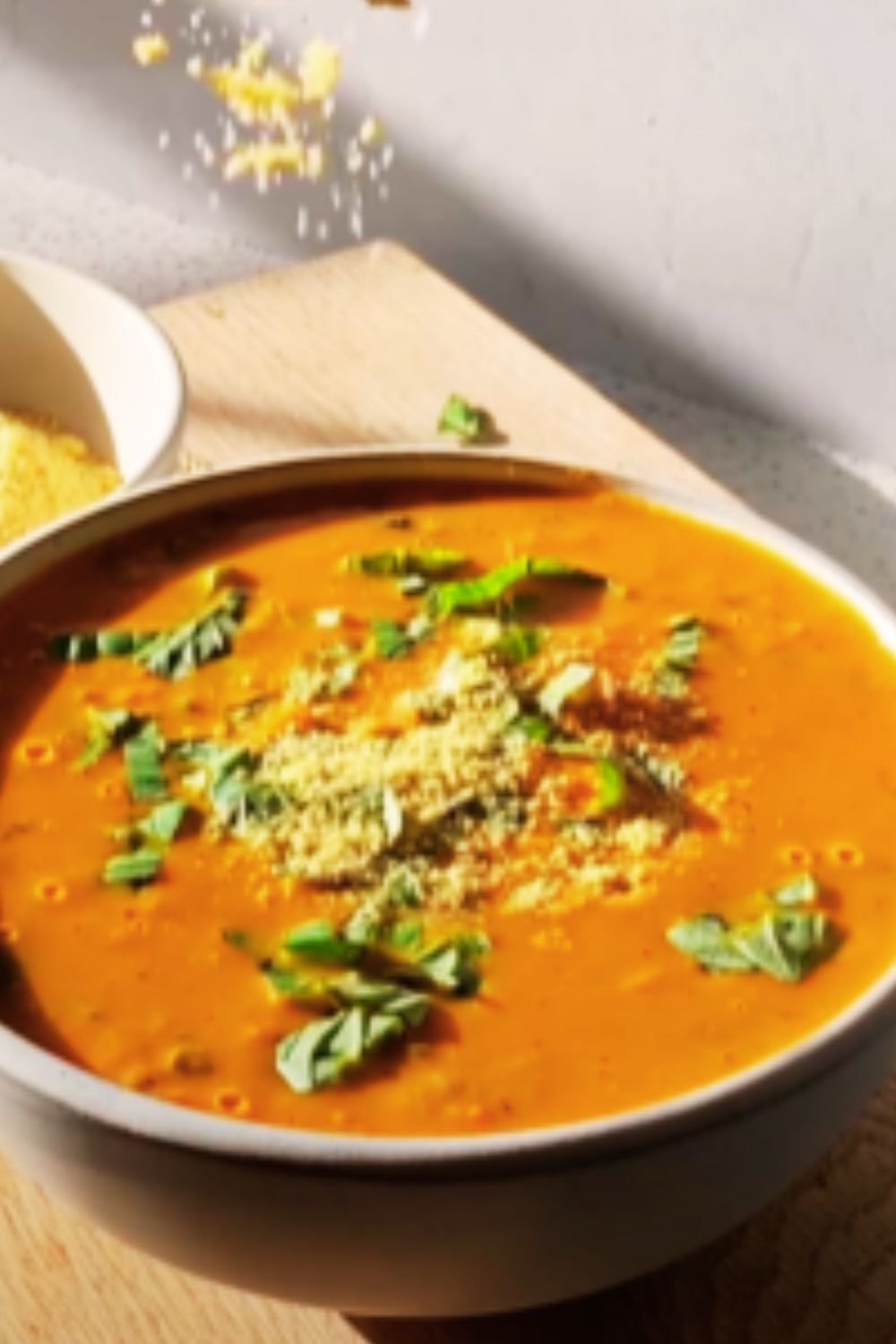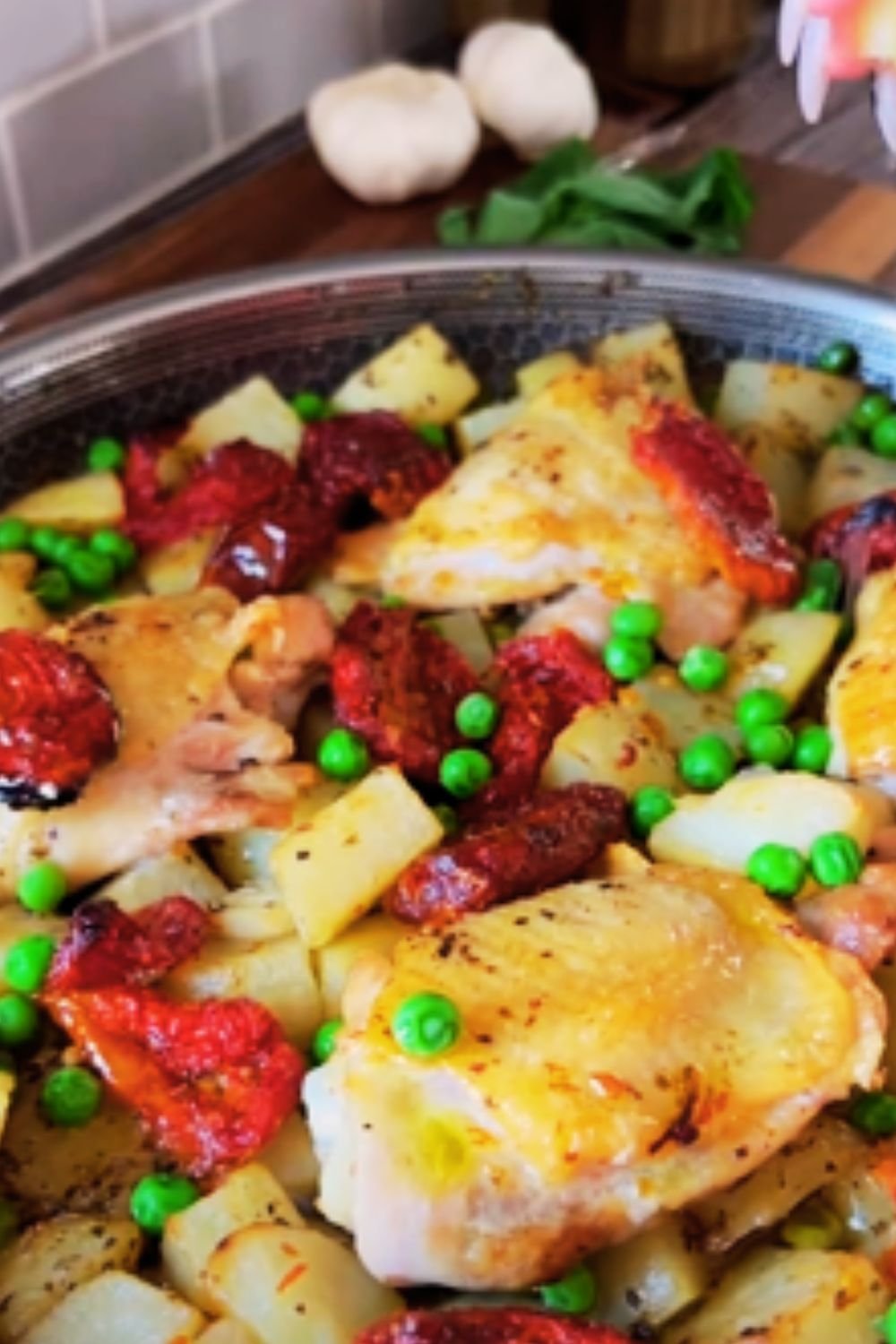Have you ever craved a meaty, savory dinner but wanted to stick to a plant-based option? Let me introduce you to my favorite culinary transformation: portobello mushroom steaks. These aren’t just any mushroom dishes—they’re juicy, flavorful, and satisfying enough to please even dedicated carnivores.
I’ve spent years perfecting my portobello steak technique, and today I’m sharing everything I’ve learned about turning these humble fungi into a spectacular main course that deserves center stage on your dinner table.
What Makes Portobello Mushrooms Special
Before we dive into cooking methods, let’s appreciate what makes portobellos so perfect for this application:
Portobello mushrooms : Mature cremini mushrooms that have grown to 4-6 inches in diameter Meaty texture : Dense, chewy consistency that stands up to cooking methods typically reserved for animal proteins Umami flavor : Rich in natural glutamates that provide deep, savory notes Absorbent quality : Readily soaks up marinades and flavors like a sponge Nutritional profile : Low in calories, high in fiber, and packed with nutrients like potassium, selenium, and B vitamins
The large, flat caps provide the perfect canvas for marinades and seasonings, while their robust structure holds up beautifully to high-heat cooking methods like grilling and pan-searing.
Selecting Perfect Portobellos
The foundation of any great portobello steak begins at the market. Here’s what I look for when selecting these mushrooms:
- Size matters – Choose mushrooms with caps measuring 4-6 inches across for proper “steak” proportions
- Freshness indicators – Look for firm caps without slimy spots or excessive moisture
- Gills check – The underside should have intact, dry gills that are chocolate brown (not black)
- Stem quality – Stems should be firm and unblemished, not dry or splintering
- Aroma test – They should smell earthy and fresh, never sour or ammonia-like
I’ve found that organic portobellos often have a better flavor profile, but conventional ones work perfectly well too. The most important factor is freshness—these mushrooms decline quickly once harvested.
The Ultimate Portobello Steak Recipe
Now, let’s get into my signature portobello steak recipe—the one that’s converted countless skeptics into believers.
Ingredients
For the marinade:
- 4 large portobello mushroom caps (stems removed)
- 3 tablespoons balsamic vinegar
- 2 tablespoons soy sauce or tamari
- 2 tablespoons olive oil
- 3 cloves garlic, minced
- 1 tablespoon fresh thyme leaves
- 1 teaspoon smoked paprika
- ½ teaspoon freshly ground black pepper
- ¼ teaspoon cayenne pepper (optional)
For serving:
- 1 tablespoon high-heat oil (avocado or grapeseed)
- Fresh herbs for garnish (parsley, thyme, or chives)
- Flaky sea salt to finish
Preparation Method
- Clean the mushrooms – Gently wipe the caps with a damp paper towel. Don’t submerge or rinse them as they’ll absorb water like sponges.
- Remove the stems and gills – Twist off the stems (save them for stock or diced into other dishes). Using a spoon, gently scrape out the dark gills. This step isn’t strictly necessary, but I find it creates a more steak-like texture and prevents the dish from turning murky.
- Score the caps – Using a sharp knife, lightly score the top of each mushroom in a crosshatch pattern, about ⅛-inch deep. This helps the marinade penetrate and creates a more interesting texture.
- Prepare the marinade – Whisk together all marinade ingredients in a bowl large enough to hold the mushrooms.
- Marinate – Place the mushrooms gill-side up in the marinade, then flip to coat the tops. Marinate for at least 30 minutes, preferably 2-4 hours. For best results, place them in a sealed container and flip halfway through the marinating time.
- Cooking options – Choose your preferred method:
- Grilling method: Preheat grill to medium-high (about 400°F). Grill mushrooms cap-side down for 4-5 minutes until grill marks appear, then flip and cook another 3-4 minutes until tender.
- Pan-searing method: Heat a cast-iron skillet over medium-high heat with 1 tablespoon high-heat oil. Place mushrooms cap-side down and cook for 4-5 minutes until browned. Flip and cook another 3-4 minutes.
- Oven method: Preheat oven to 425°F. Place mushrooms on a parchment-lined baking sheet gill-side up. Roast for 15-20 minutes until tender, flipping halfway through.
- Rest briefly – Let the cooked mushrooms rest for 3-5 minutes before slicing to allow juices to redistribute.
- Slice and serve – Cut into ½-inch slices against the grain of the gills. Sprinkle with flaky sea salt and fresh herbs.

Science Behind the Perfect Portobello Steak
Understanding the science of mushroom cooking elevates your portobello steak game. Here’s what happens during the process:
| Phase | Process | Why It Matters |
|---|---|---|
| Marinating | Mushrooms absorb flavors through their porous structure | Creates depth of flavor throughout the flesh |
| Initial Heat Contact | Maillard reaction occurs on the surface | Develops browned, caramelized flavor compounds |
| Continued Cooking | Mushroom cells break down, releasing water | Creates juiciness and concentrates flavors |
| Resting | Redistributes moisture throughout the mushroom | Ensures even texture and prevents dryness |
The key scientific principle at work is the Maillard reaction—the same browning process that makes meat so flavorful. Despite being vastly different biologically, mushrooms contain proteins and sugars that undergo similar transformations when exposed to heat, creating hundreds of new flavor compounds.
Marinade Variations to Try
While my basic marinade creates a versatile portobello steak that pairs well with many sides, I love experimenting with different flavor profiles. Here are some of my favorite variations:
Mediterranean Herb
- 3 tablespoons olive oil
- 2 tablespoons lemon juice
- 2 minced garlic cloves
- 1 tablespoon fresh rosemary, chopped
- 1 tablespoon fresh oregano, chopped
- 1 teaspoon lemon zest
- ½ teaspoon dried chili flakes
Asian-Inspired
- 2 tablespoons sesame oil
- 3 tablespoons soy sauce or tamari
- 1 tablespoon rice vinegar
- 1 teaspoon fresh ginger, grated
- 1 teaspoon maple syrup
- 1 clove garlic, minced
- ½ teaspoon Chinese five-spice powder
Smoky Southwest
- 2 tablespoons olive oil
- 1 tablespoon lime juice
- 2 teaspoons ground cumin
- 1 teaspoon smoked paprika
- 1 teaspoon chili powder
- ½ teaspoon ground coriander
- ½ teaspoon dried oregano
- 1 small jalapeño, finely diced (optional)
I recommend marinating portobellos for at least 30 minutes, but no longer than 8 hours—beyond that, their texture can become too soft.
Troubleshooting Common Issues
Even experienced cooks can encounter challenges with portobello steaks. Here’s how I address the most common problems:
| Issue | Possible Cause | Solution |
|---|---|---|
| Mushrooms turn out watery | Not removing excess moisture before cooking | Pat dry after marinating; score caps to release moisture |
| Tough or rubbery texture | Overcooking or too high heat | Reduce cooking time; use medium-high instead of high heat |
| Lacking flavor | Insufficient marinating time | Marinate longer; use more concentrated flavors |
| Burnt exterior, raw interior | Heat too high | Lower heat; cover pan briefly to steam-finish |
| Mushrooms stick to grill | Grill not properly preheated or oiled | Ensure grill is hot; oil grates before cooking |
One technique I’ve found particularly helpful is pressing the mushrooms between paper towels with a gentle weight for about 15 minutes before marinating. This removes excess moisture and helps them develop a meatier texture during cooking.
Serving Suggestions
A portobello steak deserves worthy accompaniments. Here are my favorite pairings:
Sides that Complement Portobello Steaks
- Creamy polenta – The smooth texture contrasts beautifully with the meaty mushrooms
- Roasted garlic mashed potatoes – A classic steakhouse companion
- Grilled asparagus with lemon – Provides brightness and color
- Wilted garlicky greens – Spinach, kale, or Swiss chard make perfect partners
- Herb-roasted fingerling potatoes – Crispy exteriors and creamy interiors
- Cauliflower purée – A lighter alternative to mashed potatoes
Sauces to Elevate Your Dish
- Chimichurri – This herby Argentinian sauce cuts through the mushroom’s richness
- Mushroom gravy – Double down on umami with a rich gravy using other mushroom varieties
- Balsamic reduction – Sweet, tangy, and visually striking
- Horseradish cream – Just like with beef, the sharp heat complements earthy mushrooms
- Blue cheese butter – For an indulgent finishing touch

Nutritional Benefits
Portobello steaks aren’t just delicious—they’re nutritional powerhouses too. Here’s what you’re getting in each serving:
| Nutrient | Amount per Serving* | Benefit |
|---|---|---|
| Calories | ~50 calories | Low-calorie protein alternative |
| Protein | 5-6g | Plant-based protein source |
| Fiber | 3-4g | Supports digestive health |
| Potassium | 630mg | Helps maintain fluid balance and nerve function |
| Selenium | 33% DV | Important antioxidant mineral |
| Vitamin D | Variable** | Rare plant source of vitamin D |
| B Vitamins | Various | Support energy metabolism |
*Based on one large portobello cap, excluding marinade **Vitamin D content increases when mushrooms are exposed to sunlight
What makes portobello mushrooms particularly special is their unique nutrient profile compared to animal proteins. They provide many of the same nutritional benefits without saturated fat or cholesterol, making them excellent for heart health.
Creative Serving Ideas
Looking to take your portobello steaks beyond basic dinner? Here are some creative applications:
- Portobello Wellington – Wrap marinated and pre-seared portobellos in puff pastry with mushroom duxelles for a plant-based take on Beef Wellington
- Steak Sandwiches – Slice portobellos thin and layer on crusty bread with caramelized onions and horseradish aioli
- Mushroom “Carne Asada” Tacos – Slice into strips and serve in corn tortillas with traditional taco fixings
- Steakhouse Salad – Top a robust salad with sliced portobello steak, blue cheese, and cherry tomatoes
- Breakfast Steak and Eggs – Pair with sunny-side-up eggs for a satisfying breakfast
Making Ahead and Storage
While portobello steaks are best fresh off the grill or pan, you can prep components ahead:
- Marinate up to 8 hours ahead – Store in refrigerator in a sealed container
- Pre-cook up to 2 days ahead – Cook slightly under your preferred doneness, refrigerate, then reheat briefly before serving
- Freeze cooked mushrooms – Though texture changes slightly, they can be frozen for up to 3 months
To reheat, I recommend using a 350°F oven for 10-15 minutes rather than microwaving, which can make them rubbery.
Seasonal Adaptations
While portobello mushrooms are available year-round, I like to adapt the recipe to celebrate seasonal ingredients:
| Season | Marinade Addition | Serving Suggestion |
|---|---|---|
| Spring | Fresh herbs like mint and dill | Served with spring peas and new potatoes |
| Summer | Lemon and basil | Paired with grilled corn and tomato salad |
| Fall | Rosemary and sage | Accompanied by roasted root vegetables |
| Winter | Balsamic and thyme | Served with creamy polenta and braised greens |
This approach keeps the dish fresh and exciting throughout the year while making the most of what’s in season.
Environmental Impact
One aspect I particularly appreciate about portobello steaks is their sustainability compared to animal proteins. Consider these factors:
- Water usage: Producing 1 pound of mushrooms requires just 1.8 gallons of water, compared to 1,800+ gallons for beef
- Land efficiency: Mushrooms can be vertically farmed in a fraction of the space needed for raising cattle
- Carbon footprint: Mushroom production generates significantly less greenhouse gas emissions than beef production
- Waste reduction: Mushrooms can be grown on agricultural byproducts, turning waste into food
By choosing portobello steaks over beef occasionally, you’re making a choice that’s not just delicious and nutritious but environmentally responsible too.

Frequently Asked Questions
Why are my portobello mushrooms turning black when I cook them? This is completely normal! The dark gills under the mushroom caps contain spores that can release a dark liquid during cooking. To minimize this, you can scrape out the gills before cooking, though this is purely aesthetic and doesn’t affect flavor.
Can I use baby portobellos instead of full-sized ones? Baby portobellos (also called cremini mushrooms) have a similar flavor but won’t give you the same “steak-like” experience due to their smaller size. If using creminis, I’d recommend serving them whole as “medallions” rather than trying to slice them.
Are portobello and portabella mushrooms the same thing? Yes! Both spellings refer to the same mushroom. The spelling “portobello” is more common in the U.S., while “portabella” is sometimes used in marketing materials.
How can I tell when my portobello steak is perfectly cooked? A perfectly cooked portobello should be tender when pierced with a fork, with visible caramelization on the surface. The mushroom should have shrunk somewhat as it releases moisture but still maintain its shape and integrity.
I’m allergic to soy. What can I substitute in the marinade? Coconut aminos make an excellent soy-free alternative with a similar umami quality. You can also use Worcestershire sauce (check ingredients if you’re vegetarian), or a combination of salt and nutritional yeast.
Can I make this recipe oil-free? Yes! Replace the oil in the marinade with vegetable broth or a mix of balsamic vinegar and a touch of maple syrup. For cooking, use a well-seasoned cast iron pan or non-stick grill pan.
How do I get beautiful grill marks on my portobello steaks? Ensure your grill is clean and very hot before placing mushrooms down. Don’t move them for at least 3-4 minutes. Place them at a 45-degree angle to the grill grates, then rotate 90 degrees halfway through cooking each side for a professional crosshatch pattern.
My mushrooms released a lot of liquid in the pan. What did I do wrong? This is actually normal! Mushrooms contain up to 90% water by weight. For a dryer result, you can press them between paper towels before marinating or cook at a higher heat to evaporate moisture more quickly.
Final Thoughts
Portobello steaks have become a staple in my kitchen—not as a poor substitute for meat, but as a delicious dish in their own right. They offer a blank canvas for creativity while delivering on texture, flavor, and nutrition.
Whether you’re a committed vegetarian, participating in Meatless Monday, or simply curious about plant-based cooking, these versatile fungi deserve a place in your culinary repertoire. With the techniques and tips I’ve shared, you’re well-equipped to create portobello steaks that will impress even the most dedicated carnivores at your table.
The real magic of portobello steaks lies in their ability to absorb flavors while maintaining their distinctive character. Each bite delivers a complex umami experience that satisfies on multiple levels—proving that plant-based cooking can be just as exciting and fulfilling as any traditional protein.
I encourage you to experiment with different marinades, cooking methods, and accompaniments to make this dish your own. And don’t be surprised if these mushroom steaks start making regular appearances in your meal planning—they certainly have in mine!


